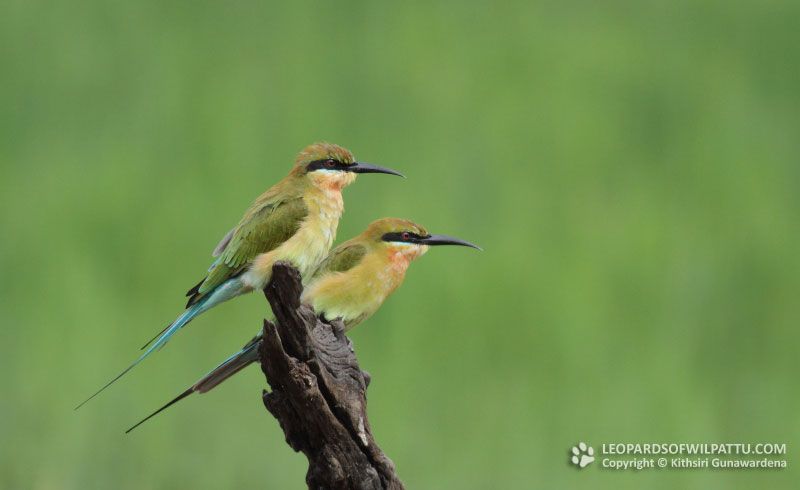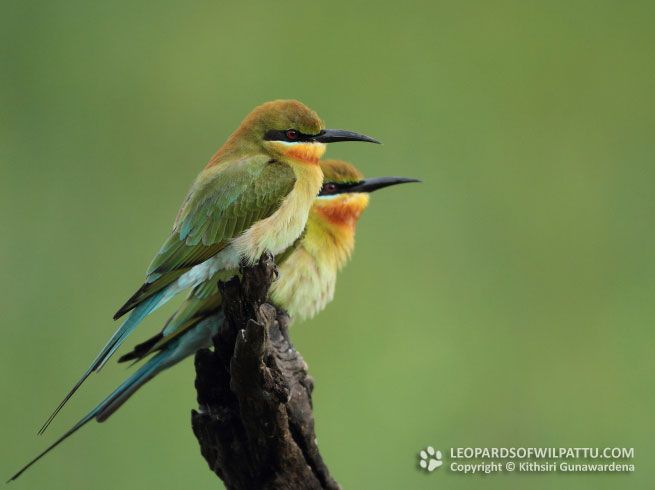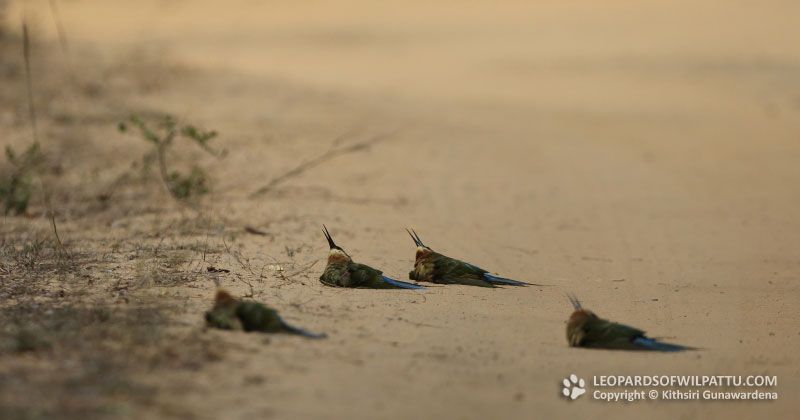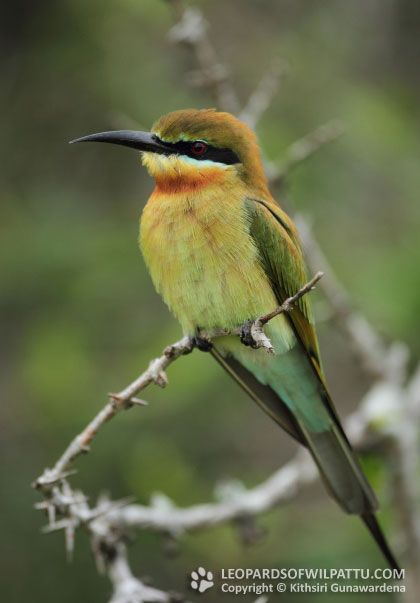
Birds ‹‹ Go Back
This is a very common migrant species with a small breeding population in the eastern dry lowlands. It is one of the first winter migrants to arrive in the country with its rolling call announcing that the migrant season has begun. During the season it is very common throughout the country at all altitudes and are common in the cities and the forests alike. This species breeds in South-eastern Asia in countries such as Afghanistan, India and Thailand to Papua New Gunea and during winter migrates down to southern India, Sri Lanka and Indonesia.
The conservation status of this species is regarded as Least Concerned (IUCN Red List).
Blue-tailed Bee Eater is a species protected under the Fauna and Flora Protection Ordinance as amended by Act No. 22 of 2009.
These birds use communal roosts at night and during evenings many can be seen flying in the same direction to arrive at their chosen location. In Kumana and Wasgomuwa National Parks I have observed large numbers of this species arriving from all directions to roost on a few chosen trees. The birds around Colombo are presumed to roost at the Muthurajawela marsh.
In Wilpattu this species can be commonly seen throughout the park from the beginning of September to end March. At most villus they will perch on exposed branches or on dried piles of elephant dung throughout the day. As in the case with all Bee Eaters they are always on the look for insect prey. Upon detecting an insect it would launch a high-speed ariel chase often ending up with a few sudden turns and twists, as the insect would try to get a way. If the hunt is successful the luckless insect would be ceased with an audible snap of its beak and the proud hunter would return with it prize to its chosen perch. Prey such as butterflies and Dragonflies would always battered on the perch, for a few occasions, until they are dead and their wings fall off prior to swallowing it whole. After the rains when swarms of butterflies (mostly Lesser Albatrosses and Lemon Migrants) gather around puddles of water these birds enjoy a season of plenty. While dust bathing is a common behavior among most species of Bee Eaters I have, on a few occasions, come across these birds sun bathing on the sandy roads of Wilpattu as well.
They make excellent subjects for photography as they are usually not very shy and will often permit a vehicle to approach them even up to about 10 to 15 feet.




